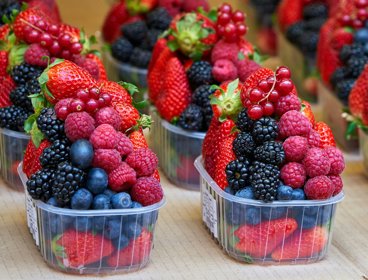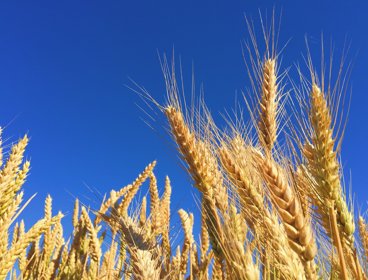March 2013
The worldwide supply of food has a complex geography and provides ample opportunities to examine the networks and flows of globalisation.
The 2013 horsemeat scandal and production networks
The Europe-wide horsemeat scandal began in Ireland, where the Food Safety Authority (FSA) found horse and pig meat in supermarket beef burgers and beef ready meals. The Irish FSA informed its British counterpart, who also found traces of horse in a range of products. Soon, traces of horsemeat were found in beef products around Europe.
Geographical concepts: Networks and flows
The widespread substitution of horsemeat for beef occurred because complex food supply chains, which spanned different stages of production and crossed national borders, were compromised somewhere along the line. The contemporary focus on ‘just in time’ meat deliveries has resulted in highly complex supply chains – some of these have up to 450 points at which they can be compromised.
These networks involving abattoirs, cold stores, cutting plants, packaging plants, traders and supermarkets have been developed to allow the purchase meat from the cheapest supplier at any given time. However, the processing of beef is largely controlled by just a few key players (large Transnational Corporations - TNCs), who supply their products throughout Europe. A single point of compromise along the food chain can therefore result in far-reaching implications.
Online resources
Map: The European trade in horsemeat mapped – interactive (Guardian)
Using data from the European Commission, this interactive map of Europe draws a web of horsemeat imports and exports within Europe. By scrolling through individual countries a more specific understand of transnational ties can be established.
Follow the Things and commodity chains
Originating from the work of Exeter-based academic Ian Cook, ‘Follow the Things’ attempts to uncover the hidden geographies behind the things we buy - many of which are food items. ‘Following’ is considered a geographical method that can be widely applied to everyday commodities. It aims to spark discussion about ethical implications associated with production and consumption in a global economy.
Geographical concepts: Commodity chains
‘Following’ attempts to trace how an item came to be in our hands. This involves working backwards from the consumer, step-by-step, until a ‘commodity chain’ is made. This encourages us to think in terms of a linear movement of goods, from one place to another.
Chains are perhaps more straightforward than networks. Often they involve tracing a physical good from a single production site, through a linear supply channel, to a single site of consumption. This allows students to grasp concepts of interconnectedness in a very tangible way.
Online resources
Website: Follow the things: Another kind of shopping
Made to look like an online store, this is the official ‘Follow the Things’ website. The range of products comes complete with detail analyses about how they reach the consumer. Many resources are pitched at undergraduate level, so be sure to adapt them.
Article: Follow the thing: Papaya
Original research by Dr Ian Cook is adapted for A-Level and GCSE audiences. This article traces the movement of papaya fruits from a Jamaican farm to London household. An accompanying worksheet provides a way to integrate this into a lesson.
Ask the Expert interview: Associate Professor Ian Cook – Food Globalisation
A question and answer-style interview with the academic behind ‘Follow the Things’. As well as exploring the ideas behind ‘following’, Ian also talks about his personal experience of researching commodities.
Drought in the USA and rising food prices
In 2012, farms throughout much of the USA felt the impacts of a drought dating back to 2010. The US Department of Agriculture called it ‘The most severe and extensive drought in at least 25 years’, and some commenters claimed it to be the worst since 1956. The destruction of major field crops (including corn and soybeans) in the Midwest had significant impacts on global yields, resulting in increased prices worldwide.
Geographical concepts
The fact that drought in the USA – the world’s largest corn producer – can impact on world food prices is evidence of the interdependence of global food systems. This case study provides an opportunity to examine how environmental factors can have economic and social repercussions both within and beyond national borders. In spite of a technologically advanced agricultural sector, an unstable water supply can have considerable impacts.
US average corn prices for the 2012/13 season are expected to be up to a third greater than those for the 2011/12 season. Increased prices such are this cause animal feed to increase, resulting in an increased cost of some meat products, however these impacts have a lag-time of up to 10 months before they affect consumer prices. Due to delayed impacts and continued drought, crop and livestock production are expected to continue being affecting in 2013.
Online resources
Article: Foresight report: Future of food and farming
This summary of the government-commissioned Foresight report provides an extensive overview of world food supply and demand. Look at the section on ‘volatility’, which will help to make sense of fluctuating food prices.
Map: U.S. Drought Monitor (University of Nebraska-Lincoln)
Released each and every Thursday, these maps provide a detailed analysis of drought impact – from ‘exceptional’ to ‘abnormally dry’ – throughout the USA. Click on a region for data tables and expanded maps of an area. Explore animations to see how drought severity has changed over a period of weeks.
Video: US drought may drive up world food prices (BBC)
This two minute report from Illinois explains the importance of US crops to corners of the world economy. Includes an interview with key players including a farmer, a commodity trader and the US Agriculture Secretary.
Key terms
Commodity: A good or service that is exchanged for a given monetary value. They are the things that we buy and sell on an everyday basis.
Commodity chain: The series of links connecting a consumer of a good, with the producer of that good. A commodity chain might typically include a factory, a packaging plant, a transport link, a trader, a retailer and a consumer.
Drought: An extended period of insufficient water supply for any given area. Droughts can be medium-term (measured in months) or long-term (measured in years). They are caused by consistently low levels of water supply (often by precipitation), which caused ground and/or surface water stores to dry up.
Just in time (JIT): A technique used by producers that ensures that resources are delivered with hours of them being needed for processing. This reduces traditional costs associated with storing resources. JIT is complex to coordinate and often requires computers to automatically process orders when they are needed.
Network: A spider’s web of connections between a number of different players. These many connections allow people, ideas, money and resources to flow between players. In a globalised world, networks often transcend national borders.



